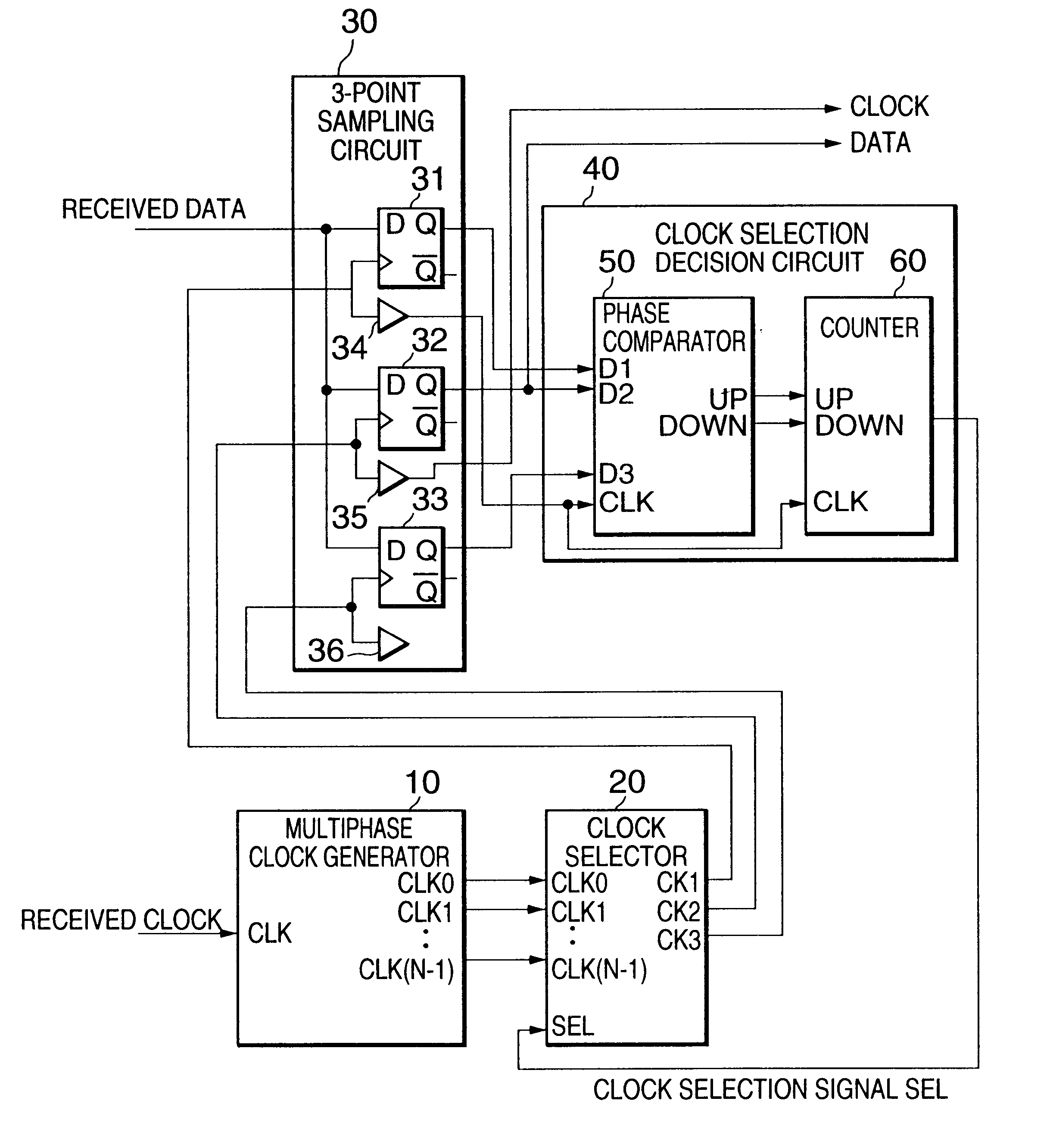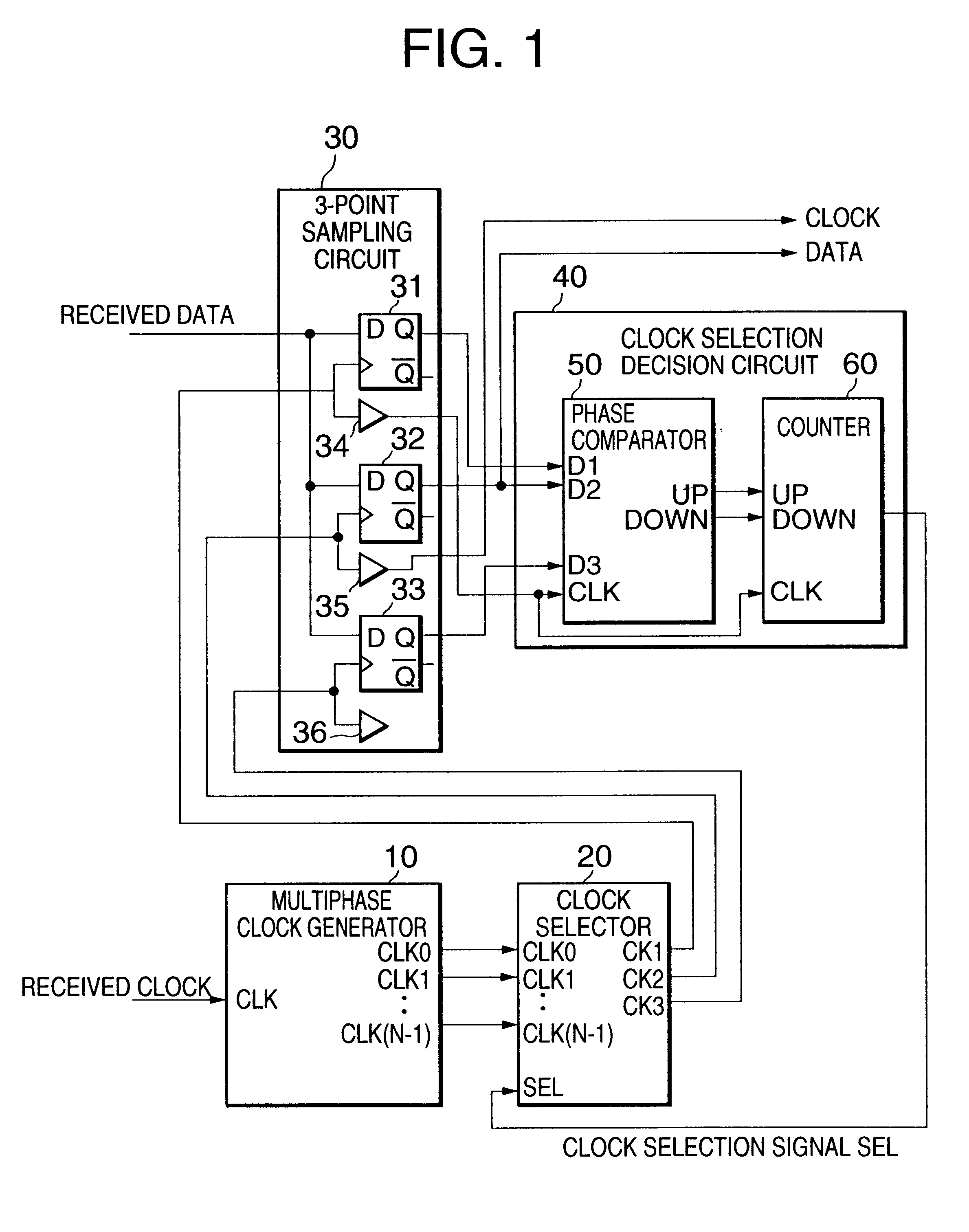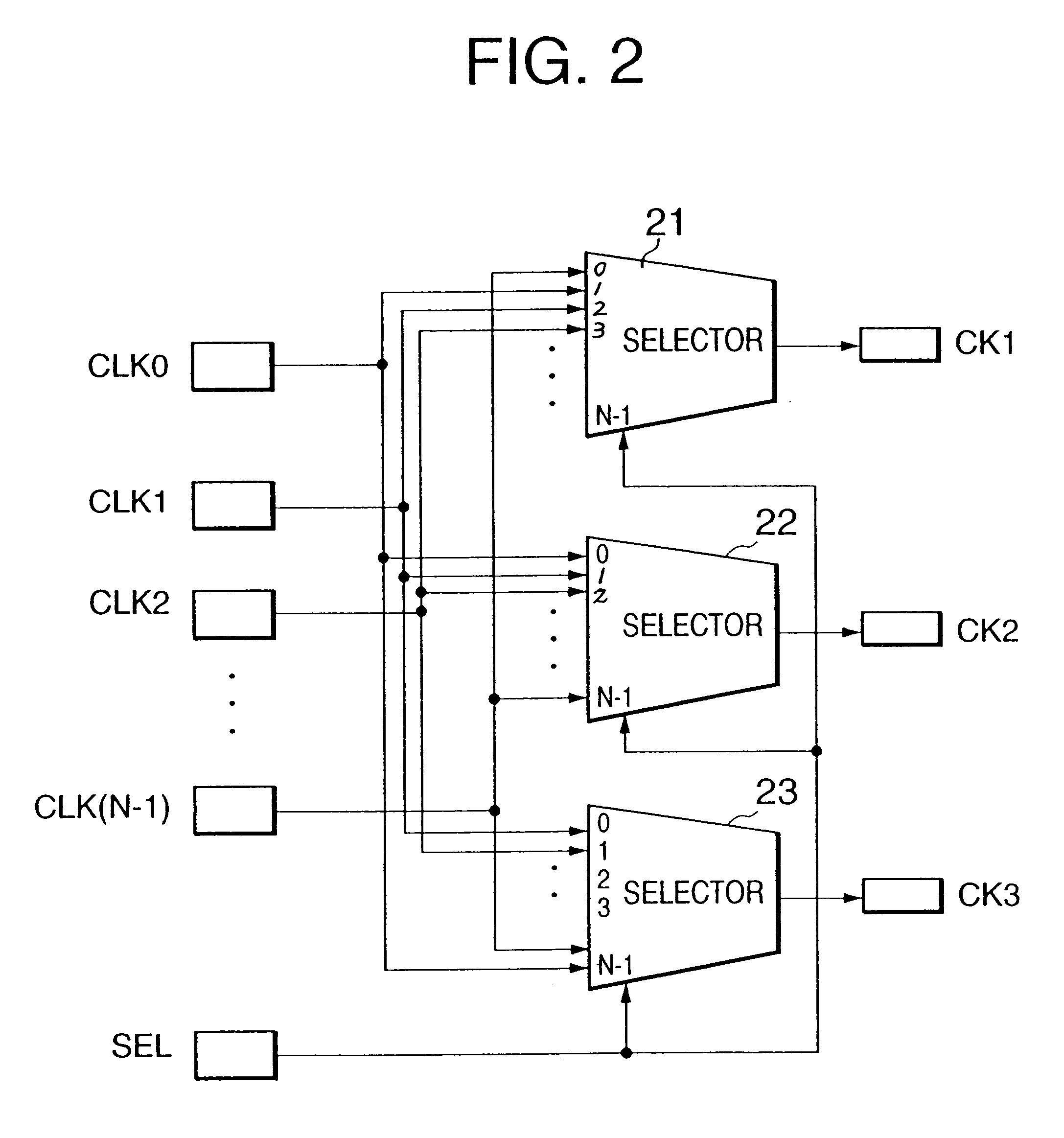High-speed data receiving circuit and method
a data receiving circuit and high-speed technology, applied in the direction of digital transmission, pulse automatic control, electrical equipment, etc., can solve the problems of reducing the reliability of comparison, unable to capture correct data, and inability to capture correct data
- Summary
- Abstract
- Description
- Claims
- Application Information
AI Technical Summary
Problems solved by technology
Method used
Image
Examples
Embodiment Construction
OF CLOCK SELECTOR
Referring to FIG. 6, the clock selector 20 may be formed from three selectors 24-26. Each of the selectors 24-26 receives multiphase clock signals CLK0 to CLK(N-1) from the multiphase clock generator 10 and a clock selection signal SEL from the clock selection decision circuit 40. A clock signal CLKk is received at the (k+2)-th input of the selector 24, the k-th input of the selector 25, and the (k-2)-th input of the selector 26. In the clock selector 20 having the above configuration, each of the selectors 24-26 selects one of the received clock signals CLK0 to CLK(N-1) in accordance with the clock selection signal SEL.
The selector 24 selects a clock signal CLK(SEL-2) from the clock signals CLK0 to CLK(N-1) and outputs it as a clock signal CLK1. The selector 25 selects a clock signal CLK(SEL) from the clock signals CLK0 to CLK(N-1) and outputs it as a clock signal CL2. The selector 26 selects a clock signal CLK(SEL+2) from the clock signals CLK0 to CLK(N-1) and out...
PUM
 Login to View More
Login to View More Abstract
Description
Claims
Application Information
 Login to View More
Login to View More - R&D
- Intellectual Property
- Life Sciences
- Materials
- Tech Scout
- Unparalleled Data Quality
- Higher Quality Content
- 60% Fewer Hallucinations
Browse by: Latest US Patents, China's latest patents, Technical Efficacy Thesaurus, Application Domain, Technology Topic, Popular Technical Reports.
© 2025 PatSnap. All rights reserved.Legal|Privacy policy|Modern Slavery Act Transparency Statement|Sitemap|About US| Contact US: help@patsnap.com



